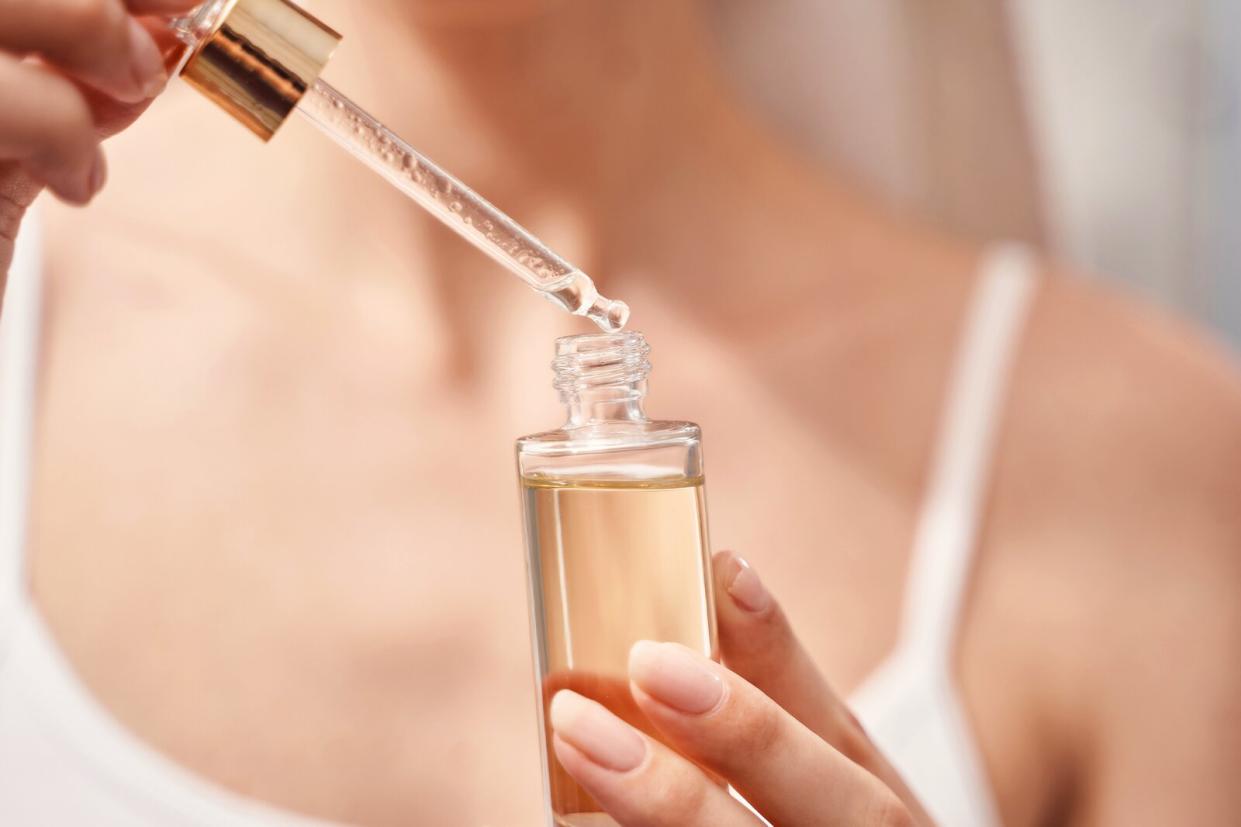Can You Use a Retinol Product While Slugging?

Getty Images
Slugging has taken the social media sphere by storm in recent years—and it isn't going anywhere any time soon. "The practice of 'slugging' is actually not new at all, but rather another word for a very old practice in dermatology called 'occlusion,'" says Shadi Kourosh, M.D., a board-certified dermatologist at Sadick Dermatology and assistant professor at Harvard. This process involves covering dry, flaky areas of the skin with thick ointments like petroleum jelly, which help to moisturize and heal the skin barrier, she adds.
Slugging first became a viral sensation when beauty influencer Charlotte Palermino raved about her "moisture sandwich," but it's been a staple in K-beauty routines for years. "The idea of slugging is derived from K-beauty and gets its name from going to bed with a face covered in slug mucus," explains Corey L. Hartman, M.D., board-certified dermatologist and founder of Skin Wellness Dermatology. "The modern derivation involves no slugs and no mucus, however. Instead, the triple-purified petroleum jelly forms a seal that prevents water loss, repairs a damaged skin barrier, and produces the coveted dewy, glass-like glow."
With promises of a hydrated, glowing complexion and a stronger skin barrier, it's no wonder that slugging has become such a viral trend, especially for those with mature skin. The supercharged hydration method, tackles fine lines and wrinkles, says Dr. Hartman. But there is a right and wrong way to "slug." You first must consider your skin type and which ingredients are safe to use below such heavy product. One such agent in question? Retinol—a potent anti-ager that many slug enthusiasts use regularly.
Related: Should You Be Slugging with Petrolatum Jelly During the Summer?
Should you use retinol while slugging?
The answer actually varies—as do professional opinions. Neda Mehr, M.D., a board-certified dermatologist and the founder of Pure Dermatology Cosmetic & Hair Center, says that she would avoid slugging with active ingredients like retinols, retinoids, and alpha-hydroxy or beta-hydroxy acids. "It can cause irritation; the petroleum jelly locks these strong ingredients in," she says. But Dr. Hartman and Dr. Kourosh say that you can use your go-to retinol product underneath petroleum jelly, if you know that your skin can tolerate the strong ingredient.
"There is no reason to not slug with retinol if your retinol is appropriate for your skin type, doesn't cause irritation, has been used for at least three months with no issues, and is part of your routine skin care regimen," affirms Dr. Hartman. In the absence of irritation, Dr. Kourosh advises layering a retinol serum underneath a thick moisturizer for better absorption. If you are post-peel or experiencing a rash, however, it's best to skip both retinol and petroleum jelly altogether.
What can you replace retinol with when you slug?
If you are concerned about using retinol while slugging—or if it has led to a reaction in the past—there are a few gentler alternatives. Dr. Mehr recommends bakuchiol, a natural iteration of the agent that is less irritating. Dr. Hartman says that there is no real substitute for retinol, but you can turn to glycolic acid to achieve similar results, such as increased cell turnover and collagen production.
Dr. Kouroush adds that serums with antioxidants or peptides can also be used in lieu of retinol. But, as with anything skin related, she says to consult a doctor to determine which slugging accompaniment works best for you. "It all depends on your skin's sensitivity and needs," she says. "Ideally, your regimen should ideally be tailored by a board-certified dermatologist."

